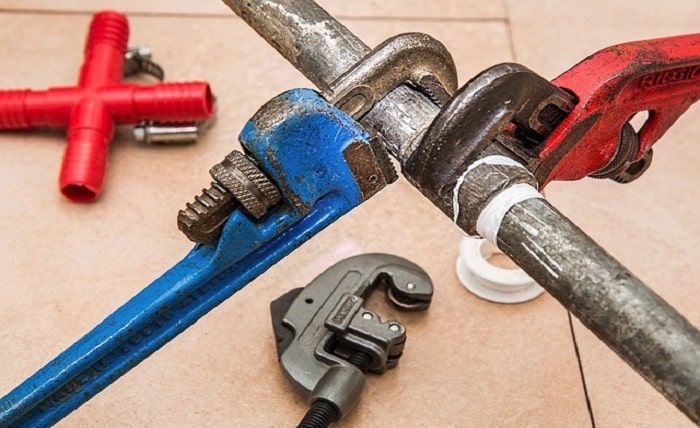Beat the Chill Winter-Proof Your Home With These Plumbing Tips

When the temperature drops, your home’s plumbing doesn’t have to suffer. For homeowners in cold climates, winter-proofing your home is not just about comfort; it’s about safeguarding against costly repairs. This guide offers practical tips to protect your plumbing from the harsh winter weather, keeping your home cozy and your pipes intact.
Understanding the Impact of Cold Weather on Plumbing
Winter can wreak havoc on your plumbing system if you’re not prepared. Freezing temperatures can cause water to turn into ice within your pipes. This expansion puts immense pressure on the pipe walls, which can eventually lead to cracks or bursts. The damage isn’t limited to the pipes themselves; the resulting leaks can lead to water damage in your home, causing structural issues and mold growth.
Common winter plumbing problems include frozen pipes, blocked drains due to ice accumulation, and malfunctioning water heaters. These issues can disrupt your daily routines and lead to expensive repairs. Understanding these risks is the first step in prevention.
It’s crucial to recognize that different parts of your plumbing system can be affected in various ways. Outdoor faucets and exposed pipes are particularly vulnerable. By acknowledging these risks, you can take proactive steps to protect your home.
Top Tips to Winterize Your Plumbing
Preparing your plumbing for winter involves a few proactive steps that can save you time and money. First, focus on insulating your pipes. Use foam pipe insulation or heating tape to cover pipes in unheated areas like garages, basements, and attics. This will help maintain a consistent temperature, preventing the water inside from freezing.
Next, drain and disconnect garden hoses from outdoor faucets. Leaving hoses connected can trap water in the faucet, which can freeze and cause pipes to burst. Consider installing frost-proof spigots to further protect your outdoor plumbing.
Inside your home, keep your thermostat set to a consistent temperature, especially at night and when you’re away. A steady indoor temperature ensures warm air circulates around pipes, reducing the risk of freezing. These steps are simple yet effective in winter-proofing your plumbing.
Signs of Frozen or Damaged Pipes
Recognizing the early signs of trouble can prevent more significant issues. One clear sign of frozen pipes is reduced or no water flow when you turn on a faucet. Cold spots on walls or floors, where pipes are located, can also indicate freezing.
Another warning sign is strange noises coming from your plumbing system, such as banging or gurgling sounds. These can signal trapped air or blockages caused by ice. If you notice frost on exposed pipes, it’s a strong indication that they’re at risk of freezing.
If you suspect your pipes are frozen or damaged, act quickly. Turn off the main water supply and open faucets to relieve pressure. Then, gently thaw frozen sections using a hairdryer or heating pad. Avoid using open flames or high heat, as this can cause further damage.
Emergency Tips
In the event of a plumbing emergency, knowing what to do can minimize damage. If a pipe bursts, immediately shut off the main water valve to stop water flow. This action can prevent flooding and reduce repair costs.
Having contact information for local emergency plumbers on hand is invaluable. They can provide prompt assistance when you’re dealing with a severe issue. Keep their number accessible, and consider storing it in your phone for quick access during an emergency.
Remember, prevention is key, but being prepared for emergencies is essential. Knowing how to respond can make a significant difference in the impact of a plumbing problem.
Long-term Strategies for Winter-Proofing
While immediate actions are necessary, long-term strategies ensure your home remains protected year after year. Schedule regular plumbing inspections to identify potential issues before they become major problems. A professional can recommend specific upgrades or repairs tailored to your home’s needs, such as a tankless water heater like those available in Kaysville.
Consider investing in smart home technology that monitors your plumbing system. Devices that detect leaks or drops in temperature can alert you to issues in real-time, allowing you to take action before extensive damage occurs.
Educate yourself and your family about proper winter maintenance. Simple practices, like leaving cabinet doors open to allow warm air around pipes, can prevent problems. By incorporating these strategies, you create a comprehensive defense against winter plumbing woes.
Conclusion
Winter-proofing your plumbing is an essential task for homeowners in cold climates. By understanding the challenges posed by freezing temperatures and taking proactive steps, you can protect your home from costly repairs and water damage. Invest time in preparing your plumbing system now, and enjoy peace of mind when winter arrives.



